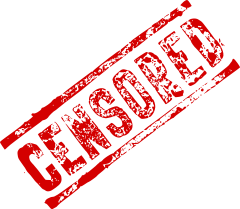So, You Want To Be a University?
March 23, 2022
Colleges in New York have explored the possibility of becoming a university and often found it difficult to do so given the state’s definition of university set forth in section 50.1(l) of the Commissioner’s Regulations. Since 1969, New York’s Board of Regents has defined a university as “a higher educational institution offering a range of registered undergraduate and graduate curricula in the liberal arts and sciences, degrees in two or more professional fields, and doctoral programs in at least three academic fields.” With this definition in place, New York was the only state in the country requiring the creation and operation of doctoral programs in order for an institution to be a university. This requirement made it difficult for colleges to market themselves to prospective students around the U.S. and abroad in a way that appropriately reflected the breadth and depth of their academic programs. This changed at the Board of Regents’ January 2022 meeting when the Board adopted a new definition of “university.” Effective Jan. 26, 2022, the Commissioner’s Regulations define a university as “a higher educational institution offering a range of registered undergraduate and graduate curricula in the liberal arts and sciences, including graduate programs registered in at least three of the following discipline areas: agriculture, biological sciences, business, education, engineering, fine arts, health professions, humanities, physical sciences and social sciences.” By removing the doctoral programs and degrees in two or more special professional fields from the definition of university, the Board of Regents has created a path for more New York colleges with both undergraduate and graduate programs to become universities if they so choose.


 The
The  Two related bills aimed at curbing rampant copyright and trademark infringement on the Internet are currently pending before the House and Senate. While the bills have been endorsed by the RIAA and MPAA and have strong bipartisan support in Congress, they have come under fire by mainstream media and civil liberties groups who believe the bills would shift too much responsibility onto ISPs, advertisers, and payment processors while also giving the U.S. government and trademark and copyright holders too much power to block allegedly infringing websites without sufficient due process. The Senate PROTECT IP Act of 2011 (S.968) The bills began in the Senate, where Senator Patrick Leahy (D-VT) introduced the Preventing Real Online Threats to Economic Creativity and Theft of Intellectual Property Act,” or the PROTECT IP Act (“PIPA”) in May of 2011 (
Two related bills aimed at curbing rampant copyright and trademark infringement on the Internet are currently pending before the House and Senate. While the bills have been endorsed by the RIAA and MPAA and have strong bipartisan support in Congress, they have come under fire by mainstream media and civil liberties groups who believe the bills would shift too much responsibility onto ISPs, advertisers, and payment processors while also giving the U.S. government and trademark and copyright holders too much power to block allegedly infringing websites without sufficient due process. The Senate PROTECT IP Act of 2011 (S.968) The bills began in the Senate, where Senator Patrick Leahy (D-VT) introduced the Preventing Real Online Threats to Economic Creativity and Theft of Intellectual Property Act,” or the PROTECT IP Act (“PIPA”) in May of 2011 (